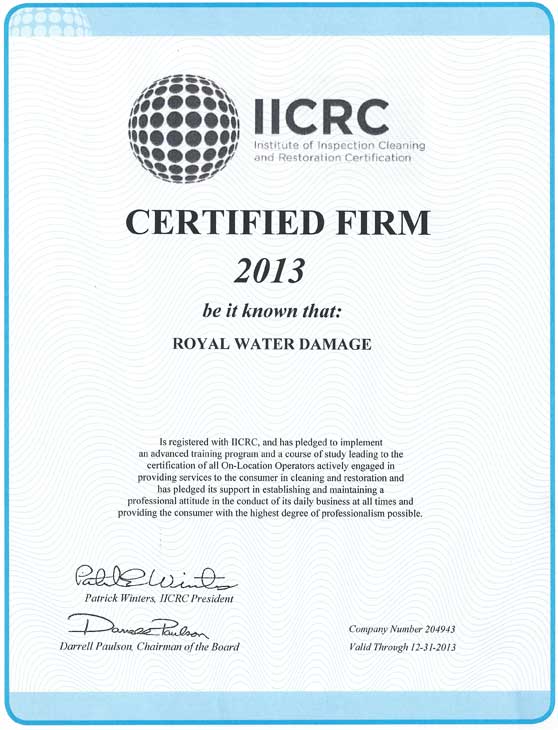Frozen, Broken Water Pipes Can Be Homeowner Nightmare. If you have water damage from broken or frozen pipes call Royal Water Damage immediately to minimize the damage.
215-657-2244 for a FREE No Obigation Estimate
We don’t often think of damage from frozen and broken water pipes as being on the same scale as a natural disaster, but damage from water is the most prevalent — yet least recognized — catastrophe. In fact, frozen and broken water pipes rank No. 2 behind hurricanes in terms of both the number of homes damaged and the amount of claim costs in the U.S.
Damage from frozen and broken water pipes can be a homeowner’s nightmare. When a pipe bursts, water gushes from the pipe like a fire hydrant, turning a basement into a lake within minutes. Water from frozen and broken pipes causes the most damage while people are away from home, because the plumbing can rupture and water can run unnoticed for several days. Repairs of around $50,000 are common due to water’s wrath.
Frozen and broken water pipes are a significant cause of loss across the nation. Damage can include soaked and ruined drywall. Wallpaper turns moldy. Kitchen cabinets warp, and carpet and draperies can be ruined. Photo albums, paperwork, antiques, furniture and clothing also can be destroyed. Sometimes homes have to be gutted because mold and mildew cover every inch from floor to ceiling.
Potential damage from frozen and broken water pipes is preventable. Efforts to prevent pipes from breaking in your home will save you from the nightmares of water damage and help reduce the enormous insurance claims that result. Policyholders share the financial burden of frozen and broken water pipes through increased homeowners insurance rates. Obviously, preventing broken water pipes is in your best interest
Call today for your No-Obligation, FREE Estimate – (215) 657-2244
Royal Water Damage suggests five easy things you can do to protect your home from frozen and broken water pipes:
1. Disconnect all garden hoses and other outside hose connections. If possible, use an indoor valve to shut off and drain water from pipes leading to outside faucets.
2. Insulate all exposed pipes located in your basement, under your home, on outside walls or in attics. For pipes with northern exposures, use heat tape according to the manufacturer’s instructions. (Improper usage may cause a fire.)
3. Set the thermostat to at least 55 degrees even when your home is vacant or unoccupied during the winter. If you plan to be away during cold-weather months, have someone regularly check your home
to make sure it’s staying warm enough to prevent freezing.
4. Winterize sprinkler systems according to the manufacturer’s recommendations. Blowing out excess water with a compressor may be the best way to prevent frozen and broken pipes. If you have a swamp cooler, winterize it by disconnecting the water source and clearing the line.
5. Very important is knowing how to shut off the water supply if a pipe bursts. Quick action can minimize damage.
Taking these few precautions before the next freeze sets in may save your home
from the devastating effects of frozen and broken water pipes.
Share on Facebook





 Water Source: Stop the source of the water. Turn off your outside water main, or call a plumber or other qualified tradesman to stop the source of water flow. Contact your local utilities department if you can’t find how to turn off the water main.
Water Source: Stop the source of the water. Turn off your outside water main, or call a plumber or other qualified tradesman to stop the source of water flow. Contact your local utilities department if you can’t find how to turn off the water main.